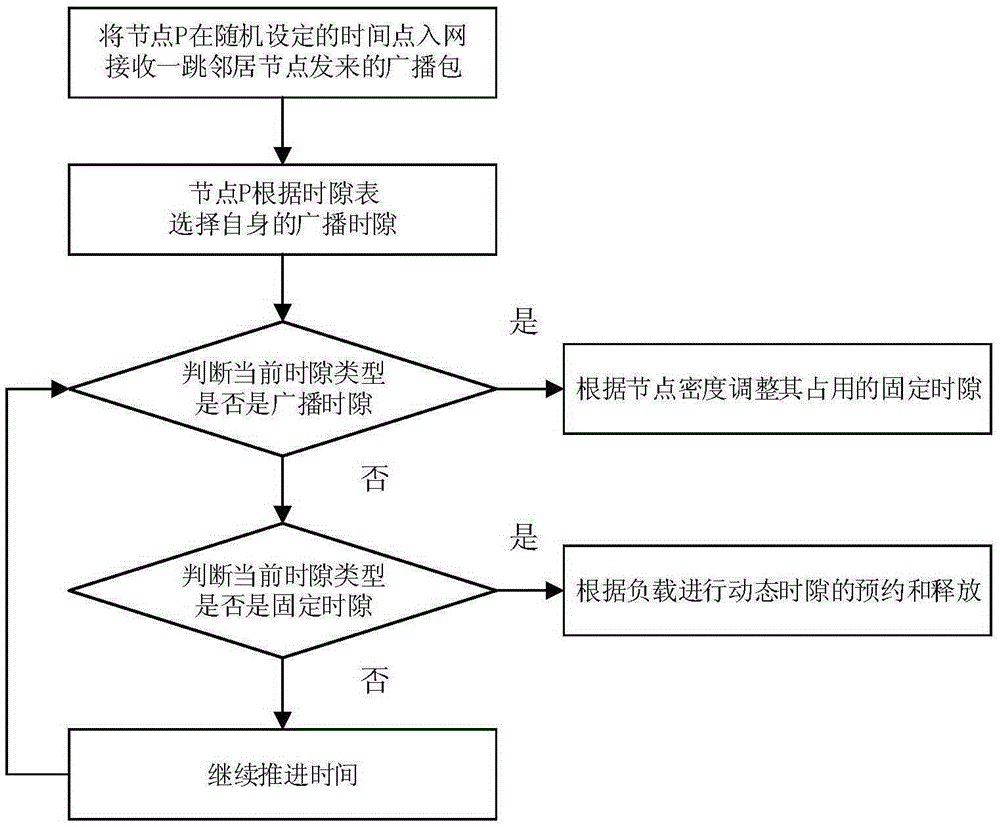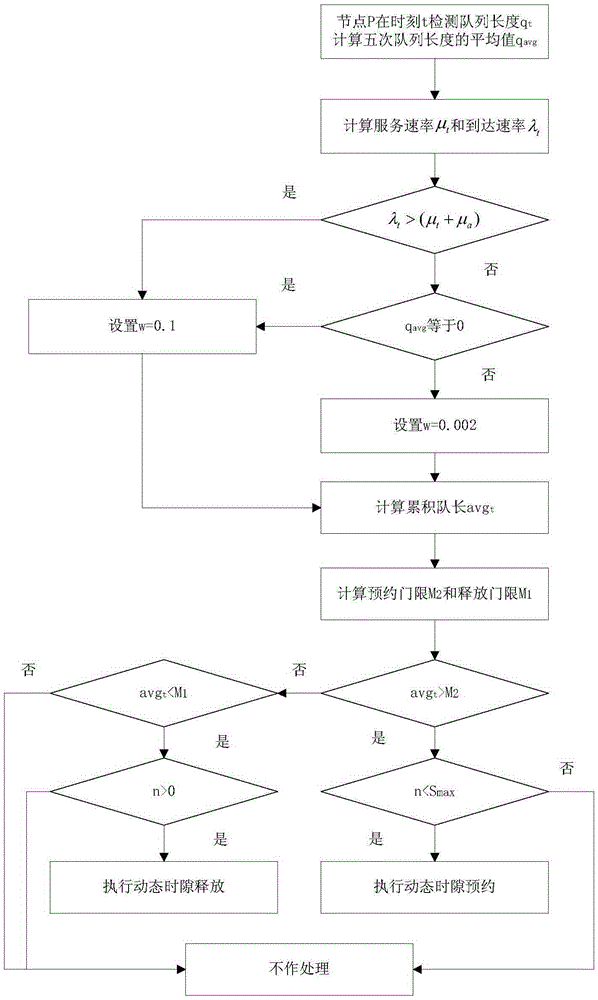Self-adaptive time slot allocation method according to node density and loads in self-organizing network
A self-organizing network and node density technology, applied in the field of communication, can solve the problems that are difficult to realize, difficult to adjust the surrounding nodes at the same time, and cannot guarantee the transmission delay of the system, so as to meet the requirements of guaranteed delay, stability and delay smooth curve effect
- Summary
- Abstract
- Description
- Claims
- Application Information
AI Technical Summary
Problems solved by technology
Method used
Image
Examples
Embodiment Construction
[0047] The content of the present invention will be described in detail below with reference to the accompanying drawings.
[0048] refer to figure 1 , the implementation steps of the present invention are as follows:
[0049] Step 1: The node is connected to the network and the time slot table is constructed.
[0050] The node P is connected to the network at a randomly set time point, the time slot table of the node is established and the channel is monitored;
[0051] Node P receives the broadcast packet sent by the one-hop neighbor node, obtains the broadcast time slot, fixed time slot and dynamic time slot occupied by the neighbor node, and updates the time slot table once according to these time slots.
[0052] Step 2: Node P selects a broadcast time slot, that is, node P randomly selects a broadcast time slot that has not been used in the entire network as its own broadcast time slot according to an updated time slot table.
[0053] Step 3: The time slot type of the ...
PUM
 Login to View More
Login to View More Abstract
Description
Claims
Application Information
 Login to View More
Login to View More - R&D
- Intellectual Property
- Life Sciences
- Materials
- Tech Scout
- Unparalleled Data Quality
- Higher Quality Content
- 60% Fewer Hallucinations
Browse by: Latest US Patents, China's latest patents, Technical Efficacy Thesaurus, Application Domain, Technology Topic, Popular Technical Reports.
© 2025 PatSnap. All rights reserved.Legal|Privacy policy|Modern Slavery Act Transparency Statement|Sitemap|About US| Contact US: help@patsnap.com



